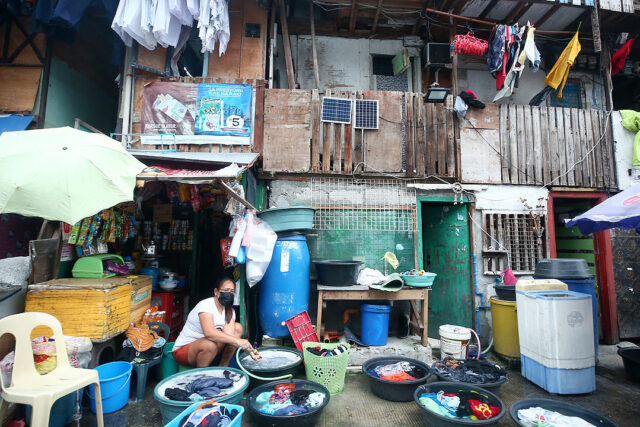
FITCH RATINGS affirmed the Philippines’ investment grade rating and kept the “negative” outlook, amid concerns over the impact of rising interest rates, soaring inflation and slowing global demand on the economy’s recovery.
Fitch on Thursday said it maintained the Philippines’ long-term foreign currency issuer default rating at “BBB,” as this “balances strong growth, external finances and a credible economic policy framework against lagging structural indicators… relative to peers.”
A “BBB” rating indicates low default risk and adequate capacity to pay, although some unfavorable economic conditions could impede said capacity.
“The ‘negative’ outlook reflects risks to Philippines’ medium-term growth prospects, fiscal adjustment path and external buffers in an environment of higher interest rates, weaker external demand and higher commodity prices,” it said in a rating action commentary released on Thursday.
A “negative” outlook means Fitch may downgrade the Philippines’ credit rating in the next 12 to 18 months. The outlook was revised to “negative” from “stable” in July 2021 due to the pandemic’s impact on the economy.
Fitch trimmed its Philippine gross domestic product (GDP) forecast to 6.8% this year, from the 6.9% estimate it gave in February. This is within the government’s 6.5-7.5% full-year target.
“(O)ur forecast assumes a slowdown from (second half of 2022) amid monetary tightening, high imported inflation and weaker global demand. Output will exceed pre-pandemic levels in (second half of 2022) and is close to potential,” the credit rater said.
Fitch noted the uncertain medium-term prospects of the Philippines, as it slashed its 2023 GDP forecast to 5.5%, from 7% previously.
“Downside risks include global growth falling below Fitch’s forecasts of 1.7% in 2023 and 2.8% in 2024, or the Philippine central bank raising policy rates beyond our assumption of 5.25%. Further growth risks stem from potential economic scarring from the pandemic, in particular, due to learning losses,” it said.
The credit rater also flagged lower public investment, although this may be offset by a rise in private sector investment that the government is targeting.
INFLATION, RATES
Fitch expects inflation to average 5.5% this year, driven by higher commodity prices and the peso’s depreciation.
“The medium-term inflation outlook is subject to considerable risk, with September consumer prices up 6.9% year on year, well above the central bank’s 4% target, and core inflation up 4.5% year on year,” it added.
For the first nine months, headline inflation averaged 5.1%, faster than the 4% seen in the same period last year but still below the Bangko Sentral ng Pilipinas’ (BSP) 5.6% forecast for 2022.
“The central bank has been focused on the second-round effects of imported inflation and exchange-rate depreciation… We think its inflation-targeting framework remains credible and we expect rates to rise further, potentially beyond our assumption of 5.25% by end-2022, if domestic inflationary pressure continues to build,” Fitch said.
The BSP has hiked interest rates by a total of 225 basis points (bps) so far since May, bringing the benchmark policy rate to 4.25% to tame inflation and slow the peso’s decline.
The peso finished trading at P58.22 per dollar on Thursday, gaining 22 centavos from its previous close, Bankers Association of the Philippines data showed. Year to date, the peso has weakened by P7.22 or 12.4% from its Dec. 31 close of P51.
Fitch said the Philippines’ current account deficit is expected to widen to 5% of GDP this year, from 1.5% last year due to higher commodity imports and strong demand.
“The (current account deficits) have put pressure on foreign-exchange reserves, although we expect ample reserve coverage at about six months of current external payments. The country’s net external creditor position is likely to remain somewhat stronger than the ‘BBB’ median,” Fitch said.
BSP data showed that the Philippines’ gross international reserves (GIR) stood at $95 billion at end-September, from $97.4 billion as of end-August.
DEBT
Fitch said the Philippines’ debt, projected at 56% of GDP, is “broadly in line with the current ‘BBB’ median, but the (general government) debt/revenue ratio (275%) and the interest payment/revenue ratio (10%) are higher than ‘BBB’ category peers’ due to relatively weak revenue mobilization.”
On the other hand, the central government’s debt-to-GDP ratio is seen at 64% by end-2022, before going down to 60% in 2024, Fitch said.
As of the second quarter, the debt-to-GDP ratio stood at 62.1%, lower than 63.5% ratio as of end-March. This exceeded the 60% threshold considered manageable by multilateral lenders for developing economies.
According to Fitch, risks that could lead to a credit rating downgrade include reduced confidence in returning to strong medium-term growth and the failure to cut the debt-to-GDP ratio.
The credit rating could be upgraded if there is sustained reduction in debt-to-GDP and debt-to-revenue ratios “due to reforms to broaden the revenue base or gains in spending efficiency that do not undermine the growth outlook.”
ING Bank N.V. Manila Senior Economist Nicholas Antonio T. Mapa said Fitch continues to keep an eye on the country’s relatively high debt levels, but gave the new administration more time “to get their fiscal house in order.”
“The free pass has been handed out for this round but for how much longer will Fitch look past the higher debt-to-GDP levels is the big question we’ll need to answer in the coming months,” Mr. Mapa said in an e-mail. “We’ve sidestepped a downgrade this time so we’ll need to double our efforts to bolster growth and improve collections.”
UnionBank of the Philippines, Inc. Chief Economist Ruben Carlo O. Asuncion said current credit rating is “accurate and representative of the Philippines’ economic situation.”
“Everything seems to be holding up despite of the continuing risks to economic growth prospects. We may see a growth slowdown in the next 12 months, but we expect economic activity to continue acceptable and decent growth,” Mr. Asuncion said.
Third-quarter GDP data is set to be released on Nov. 10. — Keisha B. Ta-asan
Fitch Ratings keeps ‘negative’ PHL outlook
Source: Bantay Radio
0 Comments